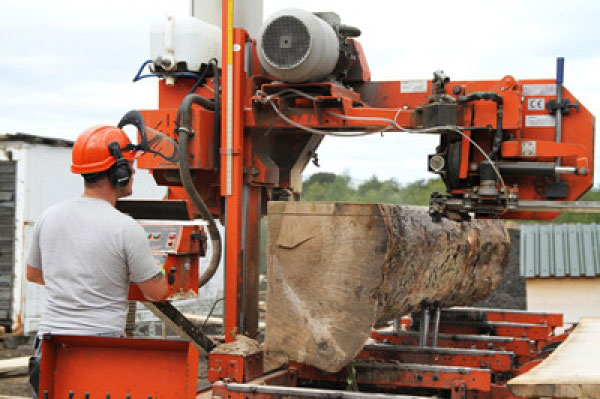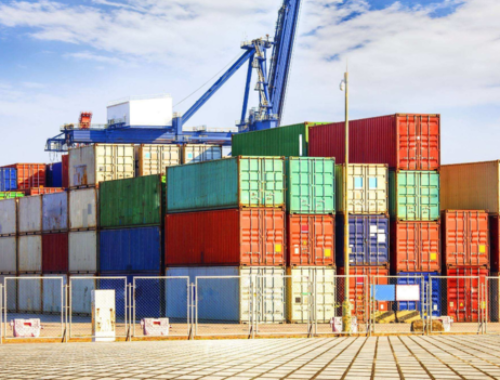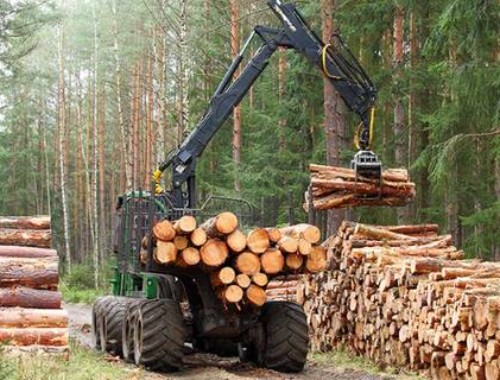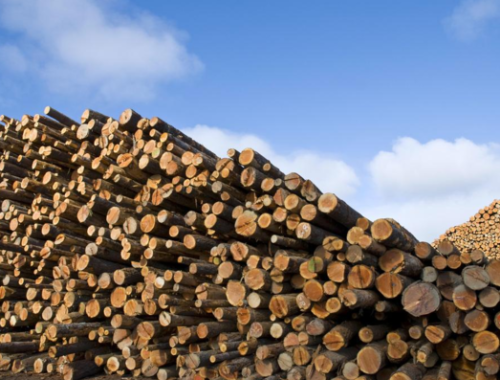Following The Peninsular Malaysia Footprint
Sawn wood is important raw material in Malaysia, particularly for the construction, furniture and furniture components sectors. However, the production of sawn timber through sawmilling activities can cause environmental issues and is perceived to have a potential impact on global warming. By GeethaRamasamy, Universiti Putra Malaysia
Logs for sawn timber production in Malaysia are usually obtained from the natural forest, forest plantations or imported logs. According to the National Timber Police report, tropical hardwood logs obtained from the natural forest are more consistent in supply for the sawmill industry compared with logs from forest plantations and imported supplies.
The forest in Peninsular Malaysia is not replanted and the logged forest is usually allowed to self-regenerate. Since the late 1990s, enrichment planting in the logged-over forest in PeninsularMalaysia was halted. It was felt that the regeneration potential of the logged-over forest was sufficient to improve the stocking density until the next harvesting rotation.
Inevitably, this also significantly reduced the cost of forest management. The natural forest in the country is managed according to a sustainable forest management (SFM) scheme, as advocated by the International Tropical Timber Organization (ITTO) for best practices in forest management.
Natural forest is described as forest stands in which tree species generate instinctively. The natural forest in Malaysia has been sustainably managed for more than three decades and is capable of producing high-quality saw logs in a sustainable manner.
The steady demand for tropical sawn timber, both in the local and international markets, has increased the supply pressure for saw logs from the natural forest. The large number of sawmills are increasingly facing saw log deficits. The sawmilling sector in Malaysia started in the early 1900s primarily for domestic consumption.

Essential Material Supply
The industry developed further into a large manufacturing sector after independence in 1957. It is no surprise that the sawmilling industry in Malaysia dominated the wood-based sector for a long time. In line with SFM practices in the natural forest, the supply of saw logs from the natural forest has been maintained at eight million cubic metres per year to ensure sustainable production. This has brought about added pressure on existing sawmilling capacity, which has inevitably resulted in the closure of several sawmills in recent years.
A sufficient supply of saw logs is essential for a competitive sawmilling industry. In the case of Malaysia, the natural forest area in Peninsular Malaysia is much smaller than available in East Malaysia.
As a result, the sawmilling capacity in Peninsular Malaysia has decreased over the years. The main factors for the decline of the sawmilling capacity in Peninsular Malaysia are: reduced supply of saw logs from the natural forest and excess capacity in sawmilling sector production.
The current harvesting operation in Peninsular Malaysia is close to the 1,000m elevation, where the natural forest is predominantly of the hill forest type. This forest type has several tree species belonging to the genus shorea of the diterocarpaceae family, which produces sawn timber that has a high demand in the world market.
The most common shorea species produced from this forest type are the dark red meranti and light red meranti, which have well-established commercial acceptance in the market. It has been noted that the meranti species still dominate the primary wood-based industry in terms of saw logs and sawn timber production in Peninsular Malaysia.
The global demand for further processing of sawn timber into wood products is inevitable because of its characteristics as an environmentally favourable material compared with materials such as steel, plastic and concrete. Sawn wood is important in Malaysia as a raw material for the construction, furniture and furniture components sectors.
Environmental Impacts
Although wood products have been recognised as an important potential climate change mitigation agent, the use of wood products in Malaysia is very much focused on its economic and availability factors rather than its environmental benefits.
Several studies have revealed that the sawmilling sector triggers environmental impacts. The consumption of resources, particularly wood material, energy, and water, during the production of sawn timber contributes to environmental burdens and impacts. The known environmental impacts that have been assessed from sawmilling activities include global warming, acidification, ozone depletion, human toxicity, photochemical ozone formation and eutrophication potential.
Among all the listed environmental impacts, it has been suggested that global warming potentials seem to have the highest profile because of the release of carbon dioxide in large quantities. This observation is supported by other researchers who have carried out studies in different fields. In one such study, the carbon footprint was described as the calculation and conversion of the amount of greenhouse gases (GHGs) caused by a particular activity into carbon dioxide equivalents (CO2-eq).
A preliminary study of the carbon footprint as a result of sawn timber production in Peninsular Malaysia was undertaken using the life cycle assessment (LCA) approach. In this study, the GHG emissions from each activity within the sawn timber production system boundary were converted to CO2-eq to determine the carbon footprint attributable to the sawn timber production process.
Due to resource consumption during the production of rough green sawn timber, the carbon footprint was evaluated in accordance with the LCA methodological framework. LCA is an analytical tool that evaluates the environmental profile on the basis of resource consumption (material, energy and water) and releases into the environment (wood wastes, airborne emission and waterborne emission).
In Malaysia, the concept of LCA is still not widely used, especially in the wood-based industries. Therefore, a study on the carbon footprint of the Malaysian sawmilling sector was much needed. This study attempted to do so using the revised ISO 14040 standard for framework and guidance and the ISO 14044 standard for technical requirements and guidelines.
The study analysed the carbon footprint associated with sawn timber production from gate to gate, which considers the logs from their entry to the sawmill through the production of rough green sawn timber. Off-road transportation activity within the sawmill was included as part of the study. The study of the carbon footprint assessment was carried out in which a flow chart was developed to identify the system’s boundary and priorities, followed by data collection for analysis, the final calculation of the results and uncertainty analysis.
Life Cycle Assessment
The assessment of the carbon footprint was carried out in the largest sawmill in Peninsular Malaysia. The investigation concentrated on saw logs of the shorea species in view of the fact that these species are the most predominant saw logs available for exploitation for sawn timber production in Peninsular Malaysia.
In relation to this fact, the sawmill chosen for this study had a consistent supply of light red meranti and dark red meranti all year round. The carbon footprint for the light red meranti and dark red meranti sawn timber was identified during the sawing processes of the saw logs. The sawmilling process flow for rough green sawn timber production is divided into four main sub-processes.
The saw logs were initially cut into flitches in the primary breakdown process. These flitches were then moved on the conveyor to the next cutting process. The flitches were re-sawn into sawn timber in the secondary breakdown process. The quality control process ensured that all defects found on the sawn timber were cross-cut and removed. This rough green sawn timber was then sorted and packaged for shipment. The off-road transportation included in the study was related to the movement of logs from the log yard to the sawmill and the movement of sawn timber for quality control activities.
Rough green sawn timber is the main product of sawmilling activity. The 153.3 cubic metres of incoming light red meranti saw logs resulted in 85.79 cubic metres of rough green sawn timber. Overall, the average yield was 55.96 percent during the production of light red meranti rough green sawn timber. On the other hand, an incoming dark red meranti saw log volume of 133.16 cubic metres resulted in 61.04 cubic metres of rough green sawn timber, giving a yield of 45.84 percent.
Apart from sawn timber, the flow of saw logs in the production process also resulted in wood loss in the form of off-cuts, shavings, sawdust and splinters. Off-cuts were sold for energy production in boilers. Therefore, these wood losses were considered as co-products. Dark red meranti generated a slightly higher volume of co-products compared to light red meranti. The differences in the proportions of co-products were 1.11, 1.08, 1.54 and 0.87 cubic metres of off-cuts, shavings, sawdust and splinters, respectively.
The conversion of logs into rough green sawn timber produced off-cuts, sawdust, splinters and shavings. This process is known as a multi-output process. As more than one product was produced in the sawmilling activity, allocation approach was taken into consideration. Allocation is described as the partitioning of the environmental loads among the different products studied.
Three different types of allocation approaches are used, namely consideration of all products as co-products, considering sawn timber as the main and only product, and the economic value approach. The allocation approach chosen in the study was the approach which considered sawn timber as the main and only product. The sawn timber was regarded as being responsible for the environmental loads.
Energy Consumption
The sawmill studied used electricity and diesel fuel energy for converting saw logs into rough green sawn timber. Electrical energy was used to drive the motors in the primary breakdown bandmill, conveyor, secondary breakdown bandmill and quality control unit processes during the conversion of light red meranti and dark red meranti saw logs into rough green sawn timber. The energy used to operate the sub-system processes were described as process energy. The study found that 30.7 and 49.1 MJ were required to produce one cubic metre of light red meranti and dark red meranti rough green sawn timber respectively.
The variation of electrical energy consumed by the two species were 6.19, 11.77, 0.44 and 0.006 MJ per cubic metre for primary breakdown bandmill, secondary breakdown bandmill, quality control and conveyor unit processes respectively. It appeared that the secondary breakdown unit process consumed the highest electrical energy. The possible explanation for this can be attributed to the use of a large number of motors to operate the secondary breakdown bandmills. On the other hand, the electrical energy consumed by the conveyor could be neglected relative to the other operations.
Diesel fuel energy was used in the sawmill for saw logs and rough green sawn timber transportation. In order to produce one cubic metres of light red meranti and dark red meranti rough green sawn timber, 0.24 and 0.38 L of diesel fuel were used. The energy value of diesel fuel was determined using the higher heating value (HHV) approach. In this context, the HHVs of diesel fuel used in this sawmill were determined to be 8.96 and 14.18 MJ per cubic metre for light red meranti and dark red meranti respectively.
Resources consumption during sawn timber production resulted in the emission of different types and quantities of certain gaseous elements to the environment. In the context of the study, the emission of greenhouse gases (GHGs), namely carbon dioxide (CO2), methane (CH4) and nitrous oxide (N2O) were the only elements taken into account.
The loss of wood during the production process was accounted for as carbon loss. Nonetheless, the release of CO2 from co-products was categorised as biogenic CO2. Biogenic CO2 is well-known as being carbon-neutral because the CO2 released to the environment during the burning and decomposition of wood is reabsorbed during the growth of the tree. Meanwhile, the wood waste used for further processes is regarded as climate change mitigation measures. Wood and biomass are normally assigned a global warming potential of 0, meaning wood does not theoretically contribute to the carbon footprint.
On the other hand, the combustion of fossil fuel for off-site electrical energy generation and transportation results in the emission of several components to the environment in different amounts, depending on the quantities and types of fossil fuel used.
Overall, the emission of CO2 was higher than that of CH4 and N2O. In fact, the emissions of CH4 and N2O can be regarded as almost zero, in view of the fact that the release of CO2 was 100 percent.
Carbon Footprint
It is clear that the carbon footprint of one cubic metre of sawn timber from dark red meranti was slightly higher than that of light red meranti. The difference in the carbon footprint per one cubic metre between the two species was calculated to be 1.26 kg CO2-eq.
Although there was no significant difference during the sawing of the two species, the apparent difference in the carbon footprint of the two species must be highlighted. The variability in energy consumption, particularly in the amount of electricity consumed, is attributable to the difference in the density of the two species.
When compared with the sawn timber production of other wood species, it appears that tropical hardwood sawn timber production carries a comparatively higher release of CO2-eq. This could be explained by its lower yield and higher proportion of wood waste produced in the sawmilling sector in the tropical region. It is apparent that the release of GHGs to the environment was closely related to the inefficiencies in the sawmills during the sawn timber production.
The value of CO2-eq in the study is quite comparable to the kiln dried sawn timber of other wood species. Denser wood have higher moisture contents which require higher energy to dry the wood. As a consequence, the release of CO2-eq will be proportionally higher. However, when compared to wood species which has similar or higher density than the meranti wood species, the value of CO2-eq did not differ much. Therefore, it can be taken into consideration that the inefficiencies in the sawmills play a significant role in determining the release of GHGs.
The GHG emissions and impacts to the environment from tropical and non-tropical wood cannot be fully addressed within the scope of the study. A full cradle to grave analysis would be needed to understand the full environmental implications of using tropical wood. (fdmasia)





 沪公网安备31010402003309号
沪公网安备31010402003309号



